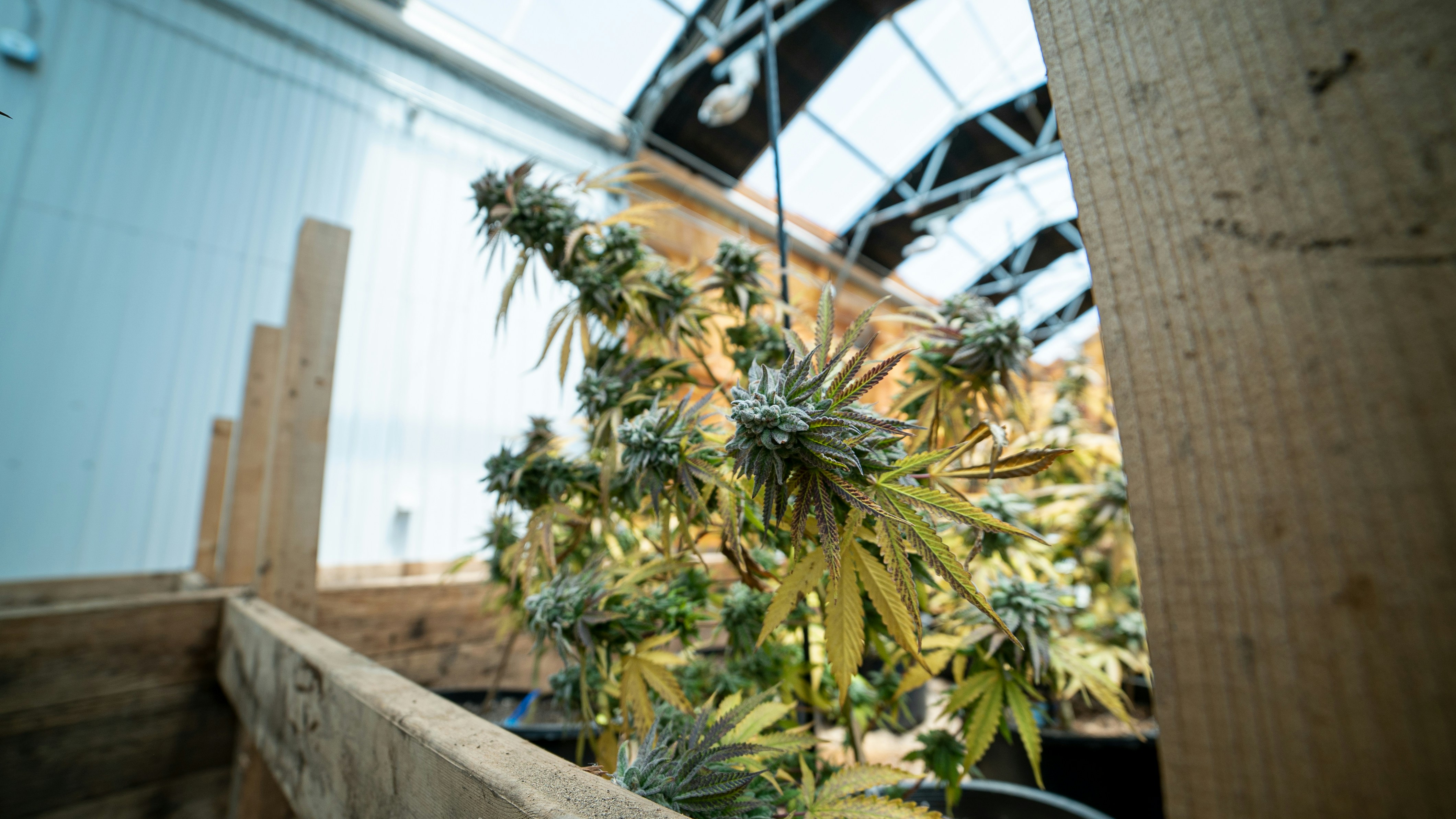Introduction to Outdoor Cannabis Cultivation
Outdoor cannabis cultivation is an increasingly popular choice for growers looking to maximize their yield while minimizing costs. This method harnesses the natural elements—sunlight, humidity, and soil—which, when optimally utilized, can lead to robust, high-potency plants. Unlike indoor cultivation, which often requires significant investment in equipment such as lighting and climate control systems, outdoor cultivation leverages the environmental conditions already present, making it a more cost-effective option. Furthermore, the ability to grow cannabis organically outdoors aligns with the values of many cultivators who prioritize sustainable practices.
The growth cycle of cannabis comprises several key stages: germination, seedling, vegetative, and flowering. Each stage presents unique requirements and challenges. During the germination phase, seeds are placed into a moist, warm environment to encourage sprouting. Once established, seedlings transition into the vegetative stage, where they experience rapid growth and form the foundational structure of the plant. This stage is crucial as it dictates the potential yield. Finally, the flowering stage begins, which is critical for producing the cannabis buds prized by users. Each of these stages requires careful monitoring of environmental factors, especially when growing outdoors, where conditions can fluctuate.
Moreover, the selection of cannabis strains is integral to successful outdoor cultivation. Certain strains thrive better in an outdoor setting due to their adaptability to varying climates and resilience to pests and diseases. Indica and sativa hybrids, for example, can become prolific when given sufficient sunlight and space to grow. Cultivators should consider local climate conditions, as well as strain characteristics such as height, flower time, and cannabinoid profiles, to determine the best varieties for their specific outdoor environment. By understanding the fundamentals of outdoor cultivation, growers can set themselves up for success in producing high-yield cannabis strains.
Choosing the Right Strain for Outdoor Growth
When cultivating cannabis outdoors, selecting the appropriate strain is critical to achieving optimal yields. The first step in this process is to consider climate compatibility. Different strains exhibit varying levels of resilience to weather conditions, such as temperature fluctuations, humidity levels, and seasonal shifts. It is essential to choose a strain that thrives in the specific conditions of your growing region. For example, strains like White Widow and Blue Dream are known for their adaptability and strong resistance to mold, making them suitable for humid climates.
In addition to climate, the growth characteristics of the cannabis strain are also vital. Outdoor strains can vary in height, flowering time, and growth habits. For instance, some strains may grow tall and bushy, requiring sufficient sunlight and space, while others may remain shorter and denser, which is advantageous for discreet gardening. Consider selecting strains with a flowering period that aligns with your local growing season to maximize yield potential. Green Crack, for example, is celebrated for its rapid growth and early flowering, allowing cultivators to harvest before the onset of colder weather.
Yield expectations are another important factor when choosing strains for outdoor cultivation. Strains that are known for their high yields can significantly enhance your harvest. Varieties such as Big Bud and Super Skunk are renowned for delivering substantial returns, often exceeding expectations in terms of quantity. Always refer to seed bank descriptions and cultivator reviews to gauge a strain’s potential yield when grown in outdoor conditions.
By carefully evaluating climate compatibility, growth characteristics, and expected yield, cultivators can make informed decisions when selecting high-yield strains for outdoor growth. Prioritizing these factors will lead to a more successful cultivation experience and bountiful results.
Understanding Your Climate Zones
The cultivation of cannabis can significantly benefit from an understanding of climate zones. Each zone possesses unique characteristics that can either promote or hinder the growth of cannabis plants. Grasping these climate nuances is essential for growers aiming to maximize their yield and quality of the harvest. The primary climate zones include tropical, Mediterranean, temperate, continental, and polar, each presenting different challenges and advantages for cannabis cultivation.
Tropical climates, known for their warm temperatures and high humidity, are ideal for growing cannabis year-round. The consistent sunlight and moisture accelerate growth cycles, allowing for potentially larger yields. However, growers must be vigilant regarding mold and pests that thrive in such environments. Implementing proper airflow and pest control strategies is crucial for maintaining plant health.
The Mediterranean climate, characterized by hot, dry summers and mild, wet winters, creates a suitable environment for cannabis cultivation. This climate allows for outdoor growth during the summer months, but growers should be mindful of water needs and soil nutrition, especially during dry spells. Techniques such as drip irrigation and mulching can enhance water retention, ensuring that cannabis plants thrive.
Temperate climates, with their four distinct seasons, may present some challenges, but they also offer opportunities for varied growing cycles. For growers in these regions, understanding frost dates and seasonal changes is critical. Utilizing greenhouses or cold frames can extend the growing season and protect plants from sudden temperature changes.
Each climate zone necessitates a tailored approach for successful cannabis cultivation. By adapting growing techniques to match the environmental factors unique to each zone, cannabis growers can optimize their cultivation strategies, ultimately leading to high-yield strains and robust plants. Understanding your climate is not merely an academic exercise; it is a practical foundation for successful outdoor cannabis growing.
Preparing the Soil for Optimal Growth
Preparing the soil for cannabis cultivation is a foundational step that directly affects the growth and yield of the plants. A well-prepared growing medium provides the essential elements that cannabis needs to thrive. The ideal soil types for cannabis are generally well-draining and rich in organic matter, including loamy soils that blend sand, silt, and clay. These compositions allow for healthy root development and sufficient aeration.
One of the critical factors in soil preparation is ensuring the right pH level. Cannabis plants prefer a slightly acidic pH of around 6.0 to 6.8. When the pH is out of this range, nutrient uptake can be severely hindered, resulting in deficiencies or toxicities that can stunt growth or reduce yield. Testing the soil pH before planting and amending it as necessary with lime or sulfur can help maintain the ideal range.
Nutrients are crucial for the optimal growth of cannabis plants, and their requirements can vary at different growth stages. For healthy vegetative growth, nitrogen is essential, while phosphorus and potassium become more vital during the flowering phase. It is important to choose high-quality fertilizers that provide a balanced nutrient profile tailored to cannabis needs. Organic amendments such as compost, worm castings, and bone meal can also significantly enrich the soil, promoting microbial activity and improving nutrient availability.
Amending the soil before planting can enhance its fertility and structure. Incorporating organic matter helps improve moisture retention and allows roots to penetrate more deeply. Additionally, cover crops can be utilized to enrich the soil naturally, adding nutrients and suppressing weeds. By investing time and effort into preparing the soil adequately, growers can create optimal conditions that will not only support robust growth but also lead to high-yield cannabis production.
The Essential Elements of Outdoor Growing
Successfully growing cannabis outdoors requires an understanding of several essential elements that influence the health and yield of your plants. Sunlight exposure, water requirements, and spatial considerations are paramount for cultivating robust cannabis crops that meet high-yield expectations.
Sunlight is arguably the most critical factor in outdoor cannabis cultivation. Cannabis plants thrive with at least six to eight hours of direct sunlight each day. Selecting a location that maximizes exposure to sunlight is key; southern-facing plots tend to receive the most consistent light. Furthermore, it is important to monitor the plants throughout the growing season, as the angle and intensity of sunlight may change, potentially affecting photosynthesis and overall growth. Utilizing reflective materials in the surrounding area can also help enhance light availability, ensuring that your plants achieve their maximum potential.
Water plays a vital role in the outdoor growth of cannabis. While these plants are resilient, they require adequate moisture to develop properly. The amount of water needed varies according to the stage of growth and larger environmental factors such as temperature and humidity. A general rule of thumb is to provide about a gallon of water per plant per day during dry spells. It is essential to avoid overwatering; therefore, one must regularly check soil moisture levels. Implementing techniques, such as mulch, can help retain soil moisture, reduce evaporation, and support healthy root development.
Space considerations must also be accounted for when growing cannabis outdoors. Adequate spacing between plants is crucial to ensure proper airflow and prevent the onset of pests and diseases. Depending on the strain, some cannabis plants can grow substantial height and width, so planning for sufficient growth space is essential. This not only facilitates healthy plant development but also allows for optimal sunlight exposure and eases maintenance tasks, such as pruning and harvesting. By paying attention to these essential elements, cultivators can significantly enhance their outdoor cannabis growing experience and achieve a bountiful yield.
Pest and Disease Management
Growing cannabis outdoors comes with its unique set of challenges, particularly in managing pests and diseases that threaten plant health. Outdoor crops face a variety of common pests, including aphids, spider mites, whiteflies, and caterpillars. These pests can cause significant damage if not managed effectively, impacting the yield and quality of your cannabis plants. Recognizing the early signs of infestation is crucial for mitigation.
To prevent pest damage, consider implementing a few key strategies. First, introducing beneficial insects, such as ladybugs or predatory wasps, can naturally reduce pest populations. Additionally, practicing crop rotation and intercropping with companion plants can create a balanced ecosystem that deters harmful insects. Furthermore, maintaining healthy soil through organic amendments strengthens plants, making them more resilient against pests.
Diseases, such as powdery mildew, root rot, and botrytis, can also threaten outdoor cannabis crops. These issues often thrive in conditions of high humidity or poor airflow. Therefore, proper spacing between plants is essential for promoting air circulation. Utilizing durable strains known for their disease resistance is another effective preventive measure. Regular monitoring for any signs of disease can expedite intervention before significant damage occurs.
In terms of treatment, organic options, such as neem oil or insecticidal soaps, can be employed to manage pest infestations without harming beneficial organisms. For more severe issues, chemical controls may be necessary, but should be used cautiously. Always follow safety guidelines and consider the impact of chemicals on beneficial insects and the environment.
Ultimately, prioritizing plant health through a combination of prevention and prompt action when problems arise will enhance the growth potential and overall yield of your outdoor cannabis crop. By adopting these management strategies, growers can mitigate the risks posed by pests and diseases effectively.
Harvesting and Curing Your Cannabis
Harvesting cannabis is a critical step in the cultivation process, directly impacting the quality and yield of the final product. The optimal time to harvest depends on several factors, including the strain, environmental conditions, and the desired effects. Generally, cannabis plants are ready for harvest when the majority of trichomes—tiny resinous glands on the buds—turn from clear to a milky white color, with some starting to turn amber. This coloration signifies the peak of cannabinoid production, essential for achieving the best potency and flavor.
To begin the harvesting process, gather the necessary tools: sharp scissors or pruning shears, gloves, and a clean workspace. Start by cutting the branches of the plant, ensuring they are handled gently to avoid damage to the buds. It is advisable to harvest in the early morning or late afternoon when the temperatures are cooler, as this helps preserve the terpenes, which are responsible for the plant’s aroma and flavor profile.
Once the cannabis has been cut, it is vital to dry the buds properly to prevent mold and preserve quality. Hang the branches upside down in a dark, well-ventilated area with a humidity level of around 50-60%. After about 7-14 days, you may check for dryness; the buds should feel dry on the outside but still slightly spongy inside. Curing, the final step in the harvesting process, enhances the cannabis’s flavor and potency. Place the dried buds in airtight glass jars, filling them loosely to allow air circulation. Store them in a cool, dark place, and open the jars daily for the first week to exchange air and release any excess moisture. Gradually, the curing duration can extend to several weeks or even months to significantly improve the overall quality of the final product.
Legal Considerations for Outdoor Growing
As outdoor cannabis cultivation becomes increasingly popular, understanding the legal considerations surrounding this practice is essential for growers. Laws and regulations vary significantly across regions, making it crucial for cultivators to familiarize themselves with their local legal landscape to ensure compliance and avoid potential penalties.
One of the first steps a prospective grower should take is to determine if outdoor cannabis cultivation is permitted in their area. Some jurisdictions have legalized cannabis for recreational or medicinal use, while others may still impose strict bans or limitations. Checking local and state laws is imperative, as regulations can differ not just nationally, but also at the county or city level. In many regions, obtaining a cultivation permit is necessary, which may involve submitting an application detailing the intended growing process, security measures, and site location.
Additionally, cannabis cultivators should be aware of restrictions regarding plant count limits. Many jurisdictions permit a specified number of plants for personal use, while commercial growers may face different limitations. Adhering to these plant count restrictions is critical, as exceeding the allowable number can lead to hefty fines or legal action. To further navigate this regulatory framework, potential growers should consult resources such as local government websites and cannabis advocacy groups, which often provide up-to-date information on compliance requirements.
Lastly, it is advisable for growers to review any neighborhood or community rules that may apply, including zoning laws and ordinances that regulate visibility, security, and the overall appearance of grow sites. Being proactive in understanding these legal parameters will not only expedite one’s outdoor growing journey but also cultivate a positive relationship with neighbors and local authorities. By staying informed and compliant, cultivators can focus on growing high-yield strains while minimizing legal risk.
Final Thoughts and Tips for Success
Growing cannabis outdoors can be a rewarding endeavor, yielding high-quality strains that are often richer in taste and potency. To ensure the success of your outdoor cannabis cultivation, it is essential to embrace a few best practices and adapt to the unique characteristics of your growing environment. First and foremost, understanding the local climate and soil conditions will play a pivotal role in maximizing yield. Each strain of cannabis has specific needs regarding temperature, humidity, and nutrients, so cultivating strains that thrive in your regional climate is paramount.
Moreover, proper garden management is crucial. Regularly monitoring your plants for pests and diseases can prevent minor issues from escalating into significant problems. Implementing organic pest control methods and ensuring adequate air circulation will contribute to healthier plants. When watering, it is beneficial to follow a schedule but remain adaptable, paying attention to the plants’ hydration needs, as environmental conditions can vary significantly throughout the growing season.
Additionally, consider engaging with fellow cultivators to share your experiences. Online forums and local gardening clubs can provide invaluable insights, with seasoned growers often willing to share their knowledge on strain selection and cultivation techniques. Continuous learning is vital; researching new practices and updates in cannabis cultivation can help improve your results and adapt to ever-evolving challenges.
Experimentation should be encouraged. Every grower will have unique conditions; hence adapting existing methods to suit your environment will foster innovation and efficiency. Use each growing season as an opportunity to refine your techniques. Keep detailed records of your cultivation process, enabling you to evaluate successful strategies and make informed adjustments for future yields.
In conclusion, outdoor cannabis cultivation requires diligence, adaptability, and a willingness to learn. By embracing these best practices and actively engaging with the broader cultivation community, you can enhance your growing experience and achieve high yields, unlocking the full potential of your cannabis garden.













